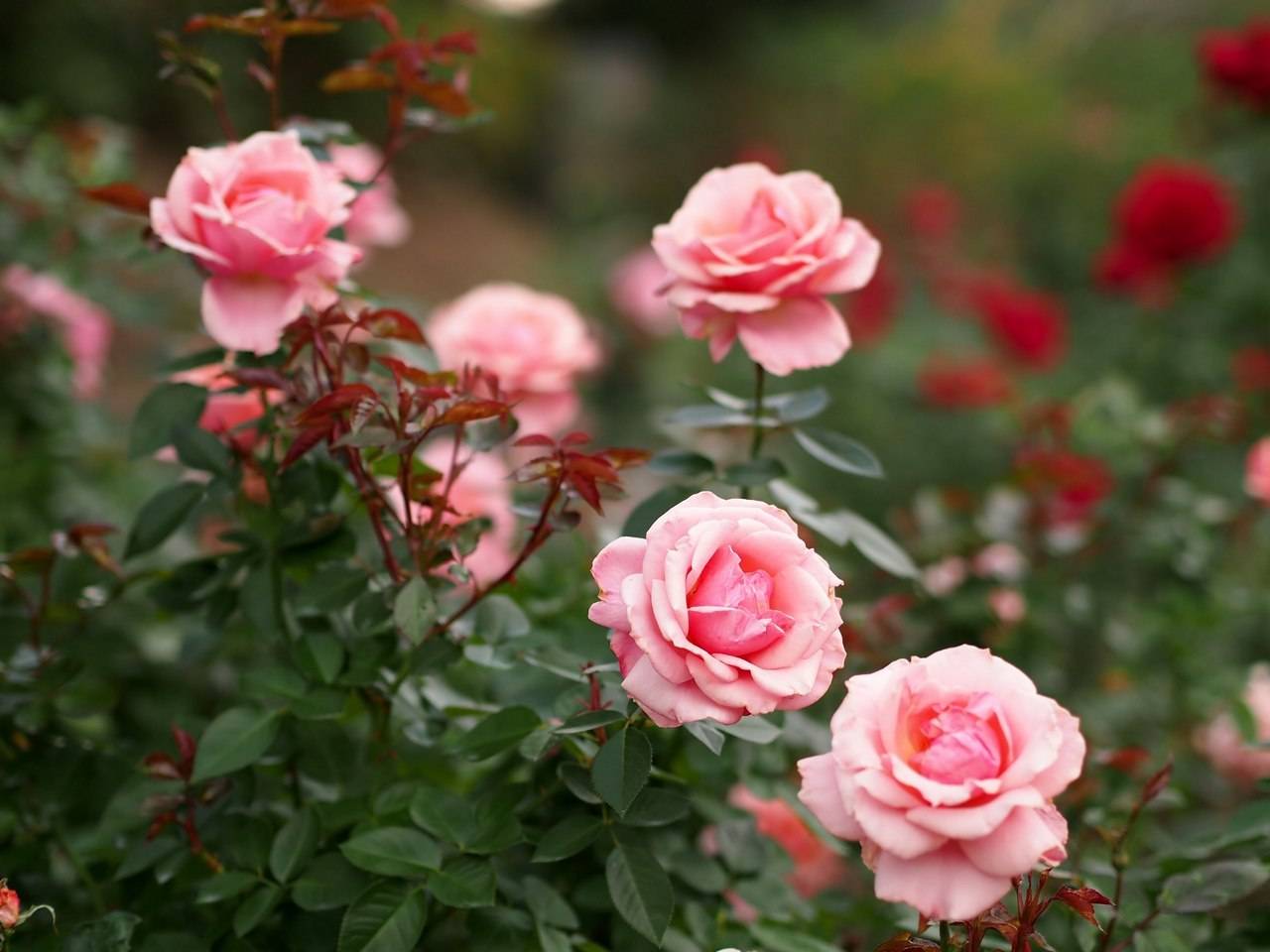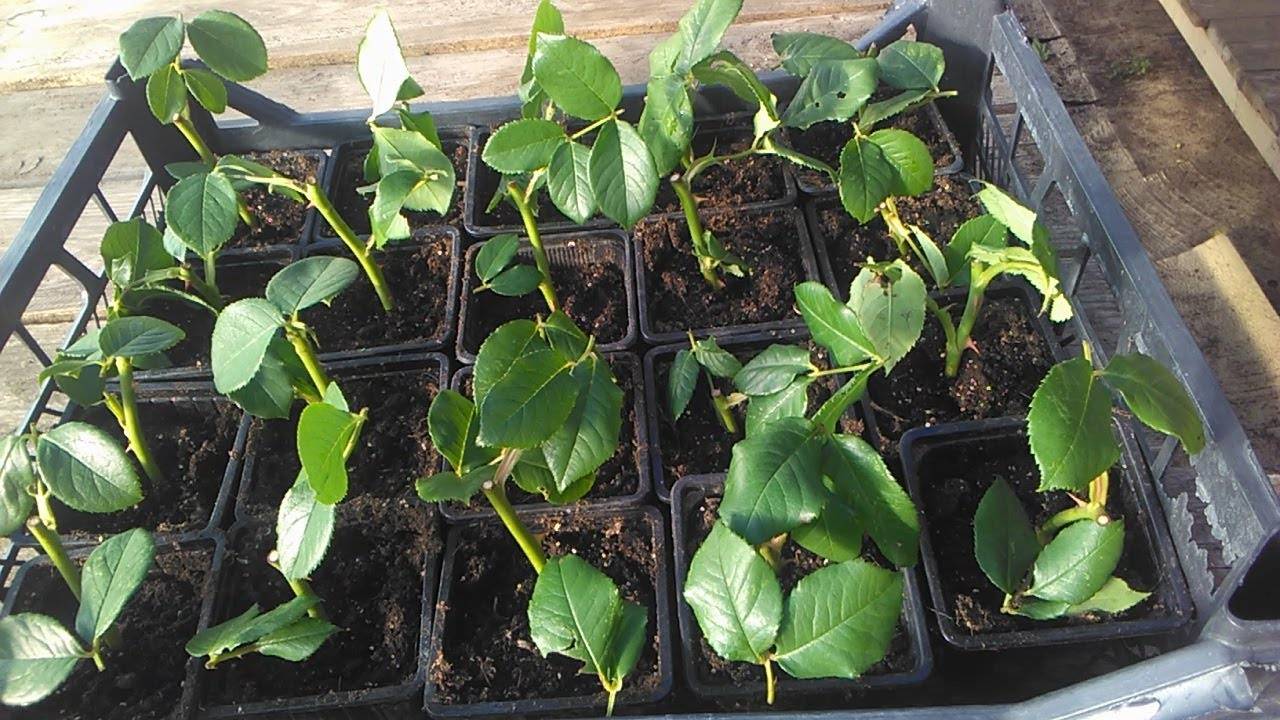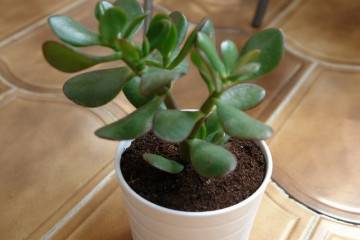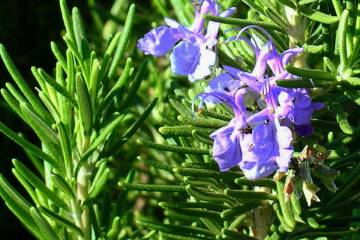Reproduction of roses - as possible, ways of rooting
Content:
- Reproduction of roses at their summer cottage and at home
- Propagation of roses by seeds
- Reproduction of roses by layering
- Propagation of roses by green cuttings, or summer cuttings
- Propagation of roses by lignified cuttings
- Propagation of roses by root suckers
- Division of bushes
- Reproduction by grafting (or budding)
- What is the best time for breeding
The rose is rightfully considered the most beautiful flower, but at the same time very capricious, requiring special care. To grow it on the territory of the garden, it is important to find a suitable place for it to grow. The rose needs a special type of soil and careful maintenance. The correct planting site is a defining moment in the process of growing roses.
Growing this flower in a summer cottage is a difficult task, but doable. The main thing is to observe the conditions for caring for him, especially the refinement of the bushes, the rules of reproduction. To understand the question of how roses reproduce in a home, nursery or summer cottage, the information below will help.
Reproduction of roses at their summer cottage and at home
In the process of growing roses on the territory of your own summer cottage, for their successful reproduction, special attention should be paid to the following issues:
- choice of landing site;
- soil requirements and irrigation conditions;
- feeding, pest control.
For successful reproduction of flowers in the place of their growth, there must be a lot of light, a comfortable temperature, fresh air, and no drafts. Roses are not planted in the shade of trees, lowlands with a large amount of water and stagnant air. The optimal place for planting is small slopes, terraces.
Watering roses should be sparse but plentiful. From the middle of summer, flowers need feeding so that immature shoots are resistant to low temperatures in the future, for better lignification.
For reproduction of flowers in a summer cottage, the following methods are used:
- by grafting;
- division of the bush;
- layering;
- reproduction by offspring;
- reproduction by vaccinations.
Propagation of roses by seeds
The seed-assisted method of propagating roses is not often used by gardeners to breed these flowers due to the complex technology of collecting seeds. In addition, not all varieties reproduce in this way. It is suitable to propagate both a bush rose and other varieties of this group.
Collecting material for planting begins at the end of July. For the extraction of seeds, preference is given to hard fruits, which have not yet completed the ripening process. An important condition for assembly is that the fruit must be brown. After cutting, it is carefully cut with a sharp knife and the seeds are removed. After the seeds are cleared of pulp, they are thoroughly washed in cool water.
Most specialized stores allow gardeners to buy material already prepared for planting. After acquiring it, it is still better to carry out stratification. It serves as a guarantee for the growth of planting material.
Preparatory stage before landing
When the planting material is cleaned with water, it is placed in a container filled with 3% hydrogen peroxide. The seeds are left in it for 30 minutes. This is necessary for the disinfection of the material, which will have a beneficial effect on the growth of flowers in the future. Seeds that have burnt onto the surface of the solution are not used for cultivation, since they are empty and will not grow roses from them.
Also, seed material of proper quality is treated with a root stimulant. The next stage is the seeds are mixed with wet river sand. The finished substance is wrapped in a fabric material soaked in the same peroxide. After they start stratification.
Seeds, wrapped in cloth, are placed in a plastic bag and stored in a cool place (basement, refrigerator). The start date of the process is recorded and the condition of the planting material is periodically checked. Seeds affected by mold fungi are removed, the remaining material is treated with hydrogen peroxide.
Preparation for planting in open ground
Gardeners can observe the first shoots after the beginning of stratification after 5-8 weeks. Sprouted seeds are transplanted into individual containers with light and sterilized soil. It will take another 4 weeks for the sprouts to develop into full-fledged seedlings.
To prevent their decay, the soil is mulched with vermiculite. Watering should be moderate. The plant can be harmed by both excessive moisture and increased dryness of the soil.
How to plant a rose correctly
Before direct planting, the plant is pre-hardened. Pots with seedlings are stored in a cool room, making sure that they are not exposed to direct sunlight. This will allow the plants to better adapt to the outdoor air in the future. Before planting, the soil is thoroughly loosened and fertilized.
Each seedling is carefully removed from the container, the roots must be straightened, the excess shoots must be trimmed. Each bush is planted in a separate hole. It should be wide enough so that the root system of the plant feels free in it and can easily develop.
If the weather is dry during the planting period, the soil is additionally moistened.
Reproduction of roses by layering
The method of air layering is suitable for reproduction of shrub, climbing varieties.
Soil preparation
Preparation of the soil begins with the onset of spring, when the snow has melted, and the soil has already warmed up a little. The first step is to loosen the soil next to the bush, which will serve as the source of a new seedling. It gets rid of garbage, cleared of weeds. Peat is used as an additional feed.
Under the lower shoot, which is considered the strongest, make a small trench up to 10 cm deep, this length should be sufficient for the retracted stem.
How to prepare layering
In order not to harm the mother bush, only one cut is prepared. In the spring, while the buds of the plant have not yet opened, they choose a flexible stem and a ripe shoot. Further, the following actions are performed: small areas of the bark are removed from the shoot or incised in the area of the eyes 5 cm long from the lower side. This is necessary for the free flow of nutrients, which will contribute to the active growth of the root system. The eyes are chosen so that it is most convenient to hook the branch to the ground. It is important that the end of the cut (2-3 buds) is above the ground.
Laying layering in the ground
The cut-off with the incisions made is pinned to the ground with special flyers in several places at once. The kidney end should be upright and attached to a small peg.
How to separate layers
In the spring, when the cut is started, the root system has already been formed. It should be carefully dug in. In places where roots have appeared, the cuttings are cut off from the mother plant and planted as a separate bush on the garden bed so that the flower can grow strong enough.
Roses should be covered with compost or peat before winter begins.
Propagation of roses by green cuttings, or summer cuttings
Both garden roses and hybrid varieties (for example, tea) are propagated by cuttings. The method involves the use of semi-lignified cuttings (summer cuttings). To implement the first method, take the middle part of the shoots at the flowering stage.
The length of the cutting with three buds should be in the region of 6-9 cm. To prevent excessive evaporation of water, it is important to cut the leaves by 1/3 of their length, remove the leaf from the bottom. It should be remembered that the cut should be straight and even and located 1 cm above the kidney. The lower cut is made at an angle of 45 °. Before planting, the cuttings are placed in a heteroauxin solution and left to soak for 2 days.
After the cuttings are abundantly sprayed every 3 hours with water every day. To retain moisture, the planted cuttings are covered with polyethylene film and glass. Plants fixed in the soil are left for overwintering. For this, the roses are additionally covered with a layer of insulating material.
It will take two years for the cuttings to develop into developed seedlings.
There is an interesting way to speed up the development of the root system in cuttings - pre-planting potatoes in the tuber. Such a cultivation of a flower allows you to grow a full-fledged plant even from an ordinary bouquet.
Propagation of roses by lignified cuttings
If fully lignified cuttings are used for propagation, ripe, even stems, the thickness of which ranges from 3 to 6 mm, are suitable for planting. They have been harvesting them since autumn. With the onset of spring, the stems turn into cuttings, the length of which is 9-11 cm, and they are placed in water for several days. Having pulled them out of the liquid, the shoots will be ready for planting immediately into the ground, after which they are watered abundantly.
In this case, it is important to leave one peephole above the surface. The space between the rows is mulched using humus, peat to prevent excessive drying out of the soil. The landings themselves are shaded.
It will take about 5 weeks to root the flower in this way, while creating favorable conditions for the plant to grow. The roots of cuttings of most types of roses continue to grow actively for a year after planting.
Propagation of roses by root suckers
Root suckers are shoots growing on the slender roots of the mother rosebush. They are harvested in the fall, before the spring growing season begins. The process consists in dropping in the offspring together with a part of the root system of an adult plant. Their upper part is cut off, leaving only 9-11 cm. The finished material is planted in a greenhouse or on an open bed for further growth.
Division of bushes
Many inexperienced gardeners are wondering how to propagate a rose from a bush. They begin to divide the bushes in early May, before the buds bloom.The bush is dug out of the soil, with the help of a pruner, it is divided into parts, each of which must have a root system and shoots. Long roots are pruned, shoots are removed, while leaving 2-4 buds.
It is important to pay attention to the fact that the kidneys should be facing outward. Sections are treated with garden pitch, the roots are moistened in a dung-vaseline talker. Only then are the seedlings ready for planting in the chosen growing area.
Reproduction by grafting (or budding)
Reproduction by grafting is the most popular vegetative method for growing roses. But due to the fact that not all types of cuttings take root well and take root, it is most likely to find already grafted seedlings on sale.
The step-by-step instruction looks like this:
- The root collar must be excavated, cleaned of the earth.
- Using a well-sharpened budding knife, and if one is not available, then a sharp razor, a shallow T-shaped cut is made on the neck from the northern side of the stock. Its length should be about 2 cm.
- A bud with an insignificant part of wood is carefully removed from the cutting.
- Using an eyepiece knife, carefully open the incision and, holding the handle, place a kidney in it, which should completely fit into the gap. It is important to remember that during the grafting process, the soil should not fall on the incision and the bud itself.
- The vaccination site is tied with a polyethylene film. At the same time, the kidney should remain free. The plant itself is spud with soil.
Reproduction by grafting is a reliable simple method that does not require significant investment, effort and time.
What is the best time for breeding
There are three breeding periods for roses: spring, summer and autumn. Summer propagation and propagation by cuttings is the most successful time for growing flowers, and planting in the soil in the warm season will allow the plant's root system to grow enough and gain a foothold in the ground until the beginning of winter frosts.
During the spring breeding season for roses, the harvesting of planting material begins from the end of March. With the onset of April, they are planted in special containers or on racks (in the case of polyanthus roses).
After the procedure for the autumn pruning of roses, before they are warmed for a cold period, the cut branches are used for grafting using plastic dishes. The resulting material is planted in them by a standard method.
Growing flowers such as roses requires patience and strength from gardeners. How to propagate roses in a home garden, each gardener decides for himself. The existing fast and effective methods allow you to choose the most preferable method for yourself.



















